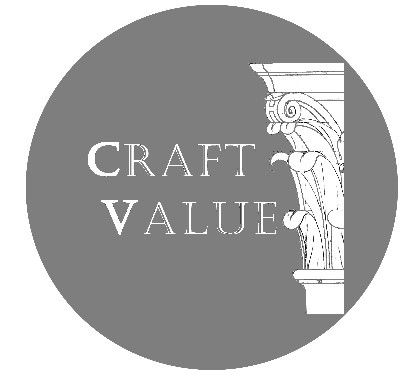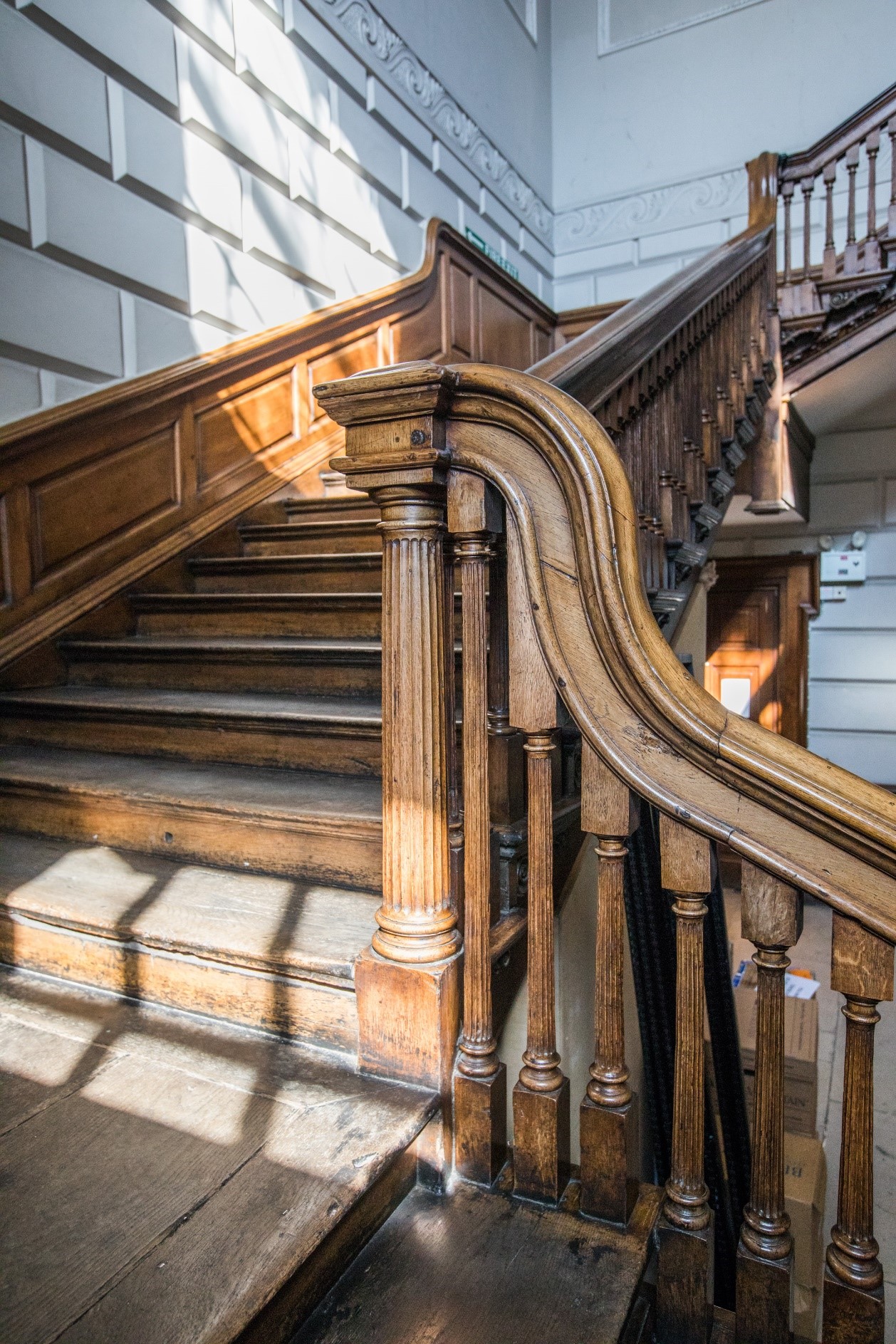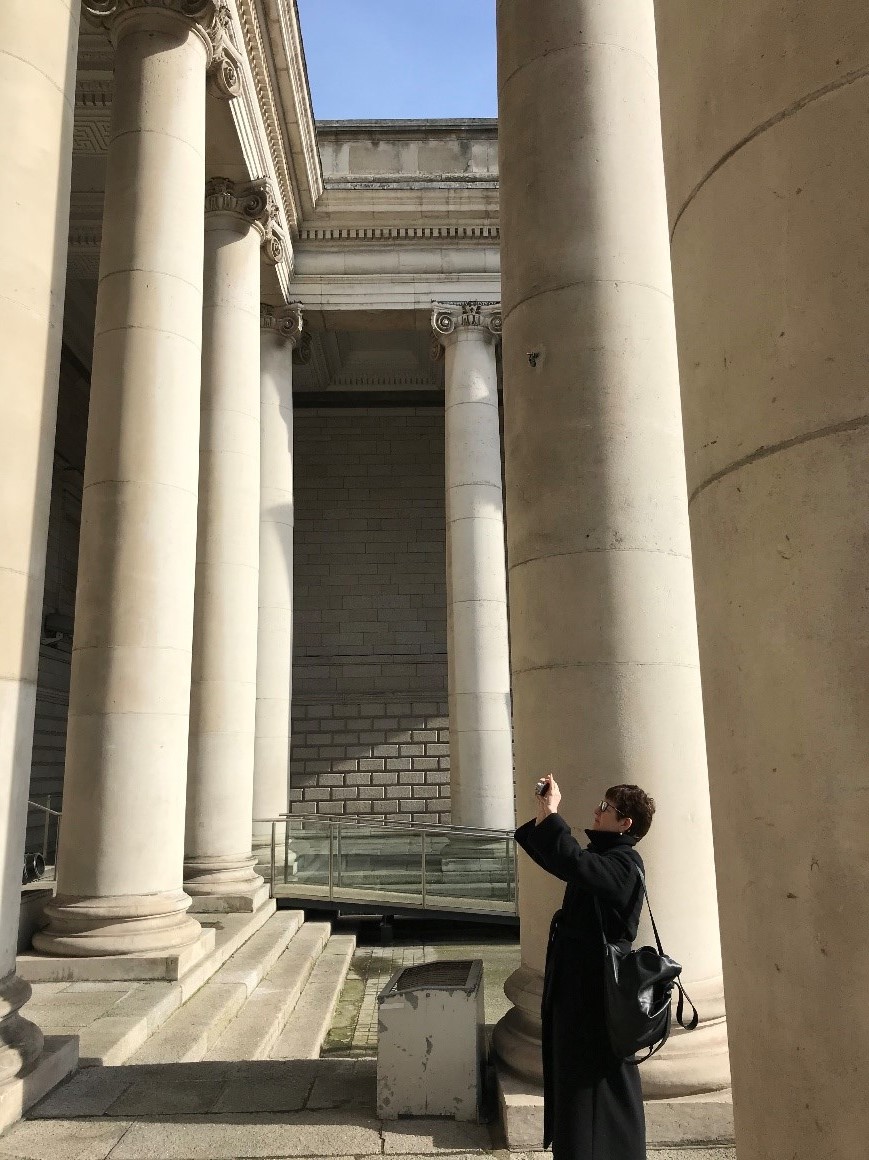CRAFTVALUE: Christine Casey


 Craftsmanship is all around us, even in the limited two-kilometre span of our reduced lives, whether a well-made door, a carefully tended window box, an earthy red brick washed pink by the rain, or in the countryside, in textured walls of local rubble and forge-crafted iron farm gates. Four decades of research in architectural history has consolidated a long-held understanding of materials and skills as fundamental elements in the generation of the built environment. While this may seem self-evident, for more than a century scholarship has focused on everything but craftsmanship. Across a range of disciplines, the individual has been the focus of enquiry, whether architect, patron, artist or writer, and if not the individual then the multiple meanings which can be construed from the building, the painting, the monument, whether cultural, political or socio-economic. The buildings of a particular place at a particular time may well reflect the genius of the architect, the ambition of the patron and any given matrix of political and cultural forces which were not evident to their makers, but the fact remains that somebody had to build them and the quality of that achievement is arguably the defining moment in the entire process. Scholarly indifference to the processes of making echoes a much longer-held intellectual disdain for manual achievement. For theorists ‘unschooled workmen (whom the Greeks call “doers”)’ were merely ‘the instruments of the architect’. With now growing concern about the decline of hand skills and a burgeoning apprenticeship culture, an emerging global discussion on the value of craftsmanship in society will be informed and enriched by research on the role of craft as a key driver of historic architectural production.
Craftsmanship is all around us, even in the limited two-kilometre span of our reduced lives, whether a well-made door, a carefully tended window box, an earthy red brick washed pink by the rain, or in the countryside, in textured walls of local rubble and forge-crafted iron farm gates. Four decades of research in architectural history has consolidated a long-held understanding of materials and skills as fundamental elements in the generation of the built environment. While this may seem self-evident, for more than a century scholarship has focused on everything but craftsmanship. Across a range of disciplines, the individual has been the focus of enquiry, whether architect, patron, artist or writer, and if not the individual then the multiple meanings which can be construed from the building, the painting, the monument, whether cultural, political or socio-economic. The buildings of a particular place at a particular time may well reflect the genius of the architect, the ambition of the patron and any given matrix of political and cultural forces which were not evident to their makers, but the fact remains that somebody had to build them and the quality of that achievement is arguably the defining moment in the entire process. Scholarly indifference to the processes of making echoes a much longer-held intellectual disdain for manual achievement. For theorists ‘unschooled workmen (whom the Greeks call “doers”)’ were merely ‘the instruments of the architect’. With now growing concern about the decline of hand skills and a burgeoning apprenticeship culture, an emerging global discussion on the value of craftsmanship in society will be informed and enriched by research on the role of craft as a key driver of historic architectural production.
The valorisation of craftsmanship constitutes the central theme of a new research project supported by the Irish Research Council Advanced Laureate Award and entitled CRAFTVALUE. Based in the Trinity Research in Irish Art Centre (TRIARC) in the Department of the History of Art and Architecture, CRAFTVALUE runs for four years (2019-23) and is supported by two post-doctoral fellows, Andrew Tierney and Melanie Hayes, and a PhD student, Nele Lüttmann. Our focus is the contribution of craftsmanship to the architecture of Britain and Ireland in the long eighteenth century (1680-1780), a period of high achievement, enduring legacy, and of a strong and cohesive craft tradition. The project is innovative not only in its focus on materials and craftsmanship, but also in addressing the architecture of Britain and Ireland as a whole, for political boundaries have dictated separate coverage of architectural history in each jurisdiction for more than a century. Crossing political, confessional and geographical boundaries, craftsmanship, both native and migrant, was a significant vehicle of cultural cohesion in early modern Europe. Yet unearthing the training, skills, methods and business operations of early modern craftsmen is a challenging task. In a society which concealed the means of production and valued only the final, polished outcome, the records of making are few and far between. How was the virtuoso staircase, the marble chimneypiece or the columnar doorcase physically created? How were tools held and used, and how was skill acquired, developed and sustained? Where were materials sourced and what was their impact on craft production? `
The answers to these and other questions must be sought in observation of the buildings themselves and in terse documentary records such as building accounts and contracts, assessments by measurers, the wills of craftsmen outlining their belongings and bequests, correspondence with clients and architects and trade manuals. While we might expect that manuals would provide the key to craft practice, too often they were written by upwardly mobile would-be architect-craftsmen who placed emphasis on the ‘higher’ activity of drawing and geometry, and who too often took for granted the day-to-day workshop skills needed to physically craft a classical column or carve a Corinthian capital.
 One of the challenges in applying academic research to manual and transitory processes is how to communicate in words the long and drawn-out period of application, the thousands of hours of apprenticeship and the tacit or embodied knowledge not hitherto captured in the literature. We need to discover the language of the craftsman as well as that of the architect. But words are clumsy tools with which to describe the turning of a baluster, the modelling of a plaster figure or the tooling of a rusticated block. Here digital technology comes to our aid, providing the optimum means of building on the archival and site research to visualise and animate the multi-layered surfaces of historic buildings. Digital humanities provide us with narrative and analytical tools to craft in three dimensions and time-lapsed form the processes which we seek to understand. This aspect of our research has significance and high relevance for many stakeholders in architectural heritage presented with the challenge of making buildings accessible to a wider public and of communicating the processes of conservation. We have been working with heritage organisations in Britain and Ireland, including the National Trust and the Office of Public Works, to develop new strategies for digital representation of crafted surfaces in historic buildings. This work builds on the experience of a previous research project at Trinity College Dublin, jointly directed with Patrick Wyse Jackson of the Department of Geology, which focused on the 19th century Museum Building and produced the first complete 3D scan of an historic building on the College campus.
One of the challenges in applying academic research to manual and transitory processes is how to communicate in words the long and drawn-out period of application, the thousands of hours of apprenticeship and the tacit or embodied knowledge not hitherto captured in the literature. We need to discover the language of the craftsman as well as that of the architect. But words are clumsy tools with which to describe the turning of a baluster, the modelling of a plaster figure or the tooling of a rusticated block. Here digital technology comes to our aid, providing the optimum means of building on the archival and site research to visualise and animate the multi-layered surfaces of historic buildings. Digital humanities provide us with narrative and analytical tools to craft in three dimensions and time-lapsed form the processes which we seek to understand. This aspect of our research has significance and high relevance for many stakeholders in architectural heritage presented with the challenge of making buildings accessible to a wider public and of communicating the processes of conservation. We have been working with heritage organisations in Britain and Ireland, including the National Trust and the Office of Public Works, to develop new strategies for digital representation of crafted surfaces in historic buildings. This work builds on the experience of a previous research project at Trinity College Dublin, jointly directed with Patrick Wyse Jackson of the Department of Geology, which focused on the 19th century Museum Building and produced the first complete 3D scan of an historic building on the College campus.
Christine Casey
Christine Casey is a leading authority on Irish architecture and author of the definitive work on the architecture of Dublin city. She is a member of the Royal Irish Academy and an honorary member of the Royal Institute of the Architects of Ireland, and has served as a board member on national organisations for architectural heritage. She has published widely on architecture and decoration in early modern Europe, Britain and Ireland. In 2018 she was awarded the Alice Davis Hitchcock medallion of the Society of Architectural Historians of Great Britain for ‘outstanding contribution to the study or knowledge of architectural history’.

